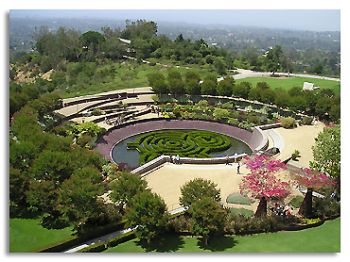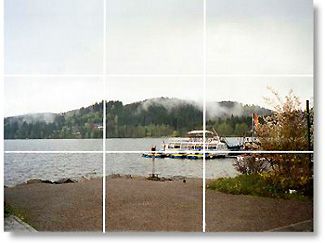|
How to take great
|
That's great because landscape photos are among the most breathtaking forms of photography.
Go ahead! Capture memories, capture grandeur, and relive these landscapes in digital photo format.
In my case, I just love taking digital photos of landscapes because they remind me of the beauty of nature and of God's creation. They give a feeling of peace and a sense of awe every time I look at them.
Looking at my landscape digital photos instantly transport me to the beautiful landscapes. And best of all, I can easily 'show' these landscapes as digital photos to my family and friends, and they, too, can bask in the beauty of my landscape photos.
You can do that, too. Here's how…
First, pay attention to the lighting
For more impact to your landscape digital photos, take pictures during early morning or late afternoon. At this time, the light is just enough and usually casts a golden glow to your subject.
Since photography is about writing or painting with light, it makes no difference that you're using a digital camera to take pictures. You still have to pay attention to their proper exposure.
Simply said, exposure means the amount of light that reaches your camera's sensor. If the light is too bright, your picture is said to be overexposed. Otherwise it's underexposed if it's too dim.
If you take pictures during high noon, chances are the people included in your digital photos will be squinting. You may want to use filters if there is so much UV light present. The filters will absorb part of the UV radiation.
The opposite is true at night, though. Usually, the picture comes out too dark unless you make some camera and lighting adjustments.
Another thing, if your subject is far (more than 10 feet), you might want to turn off your flash and capture the scene using the existing light. Be careful to hold your camera very steadily or better still, use a tripod.
Next, what type of camera is best for taking landscape digital photos?
Wide-angle lens are often used to capture landscape digital photos. These lens can capture a larger area and are often used for taking landscape or architectural pictures.
But if you don't have a wide-angle lens, most digital cameras have the panoramic mode. Try using this mode to capture the landscape in your digital photos. It has a 1:3 aspect ratio thus the digital photo taken becomes wider or taller (if shot vertically) than ordinary settings.
Now, there are software that help you 'stitch together' digital photos taken separately. For example, you want to shoot a wide landscape, you can take 3 separate digital photos of it: left, middle, then right. Later on, connect these three photos using your computer.
This is useful if you're not using a wide-angle lens digital camera.
But more important than the camera you use is the arrangement of elements within your digital photo.
Here's where composition comes in...
How best to compose your landscape digital photos
Composition is essential to make your landscape digital photos more dramatic. But quite often when we see an impressive landscape, we just point and click.
With a little experimentation, though, we can make the landscape come alive more by introducing a foreground object such as flowers, leaves and branches, or some interesting patch of colors from different objects such as a boat or a human interest.
The trick is to focus on the foreground object so it stands out, while still capturing the grandeur of the background. Of course, the foreground object should only take up a small part of your landscape digital photo, otherwise, it will eclipse the main landscape at its back.
Useful tip: Look at the whole picture and compose the elements within your viewfinder or LCD.
Compose your digital photo in such a way that whoever looks at your photos get your message.
Focus on the subject. Give it more picture space. Too much details will clutter your photo. Let your subject stand out and dominate your picture.
Let's say you're taking a picture of a mountain with a field of flowers at its base. Decide which one should be your subject. Then focus on that. Give it 2/3 of your picture's space, and not both of them taking each half of the picture.
This way, your interpretation won't get lost to those who look at your photos.
While you can always edit your landscape digital photos later on, get it right the first time and you save time editing your photos.
Btw, does your landscape have some lines such as a fence, stream, trees near it? Then liven up your digital photo by photographing these lines leading to your main subject. Your eyes will follow along to the center of interest.
Just don't let these lines slice your digital photos halfway.
Next tip, taking pictures from different levels or unique angles...
How taking pictures at different levels and angles enhances your landscape digital photos
One word: unique. Your digital photos will truly be a unique expression of you.
So have a look around before taking your pictures. Then try various angles, levels, or perspectives when taking your landscape digital photos. You can even sit or bend slightly. Don't copy what everyone else is taking, unless that same spot is truly a great one to focus on your subject.

This digital photo is taken from the 4th level. It overlooks the place and shows the vastness of the landscape from an elevated view.
Try capturing more of the sky when taking mountains or other high structures. But it's best to lock the exposure (press your shutter halfway) on your subject first before pointing your camera upwards to include more of the sky in your photo.
If you're traveling in a boat under a bridge, take a picture of the bridge from underneath. Try it in several angles!
But what about the rule of thirds? Is it applicable here?
The rule of thirds is the most frequent photography tip I've heard. Simply said, it means you shouldn't put your subject at the very middle of your picture.
Imagine your viewfinder--or your LCD--being divided into 3 horizontal parts and 3 vertical parts. Or simply imagine 2 parallel horizontal lines intersecting with 2 vertical lines. The 4 intersection points are the best position to lock on to your subject.
This is how to do it: using your camera's focus, press the shutter halfway to lock focus on your subject, then move the viewfinder slightly either to your left or right. Then press the shutter all the way down.

it's placed in one of the intersecting points.
Does depth of field apply in shooting landscape digital photos?
Depth of field is usually more applicable in taking close range photos. But it should also be considered in taking landscape digital photos.
Now, depth of field is simply the distance of an object in front or at the back of your subject that is still included in focus.
Usually, a foreground object adds depth and makes your landscape photos more interesting. For example, you can include some clump of flowers, leaves or branches, boulder, fence, etc. while photographing the landscape. This gives a stronger point of interest where the eye can rest.
Speaking of interesting, don't forget...
The mirror effect
Capturing reflections on water, or the mirror effect, is one of the most stunning ways of taking landscape digital photos. To do this, be on the lookout for bodies of water like lakes or rivers and see the landscape reflected in them.
But in order to take pictures of your subject's reflection, you must wait until the water has become still to get a clear reflection of your subject.
Also, you might need to adjust your camera's overall brightness so as not to have a very dark photo or a washed out one.
Polarizing lens can come in handy to reduce the sunlight reflecting off the water. But don't take your digital photos at high noon because the reflection is very bright.
Now, it's well and good that you know how to take remarkable landscape photos. But it's certainly better to bring your trusty accessories to help out.
What other accessories come in handy?
Accessories for digital cameras can help a long way to capturing great digital photos. Take the tripod for instance, it's a must for clear and sharp pictures because a slight shake of the hand can blur pictures
Tripods actually come in many shapes and forms. There are thin ones and think ones. Some can even be folded and put in your pocket. Cool eh?
But if you don't have your tripod with you when you're about to take your photos, you might want to steady your hand by putting your digital camera over a solid surface like a boulder, railing, etc. Just hold your camera firmly and safely so it doesn't fall or meet any accident.
While you can always sharpen your digital photos using your computer, taking sharp pictures whenever possible will lessen the time and effort you have to spend correcting them.
Then again, to minimize your effort in correcting pictures, you should avoid including certain things in your photos.
What to avoid when taking digital photos of landscape
Well-composed landscape digital photos are not only about angles and lighting. You must check all the elements in your viewfinder to see if there are some clutter that might be included in your digital photo.
For example, are there garbage cans, wires, poles, sign boards, etc. included? Is that okay to be in your photo?
Hey, there are no right or wrong objects here. If for artistic reasons you want to include some wires, then it's fine. If not, then change position so these clutter are not captured in your photos.
How about the weather?
Should you take landscape digital photos during rainy days?
Landscapes look a little gloomy during rainy days. But it doesn't mean you should keep your camera at home during this time.
You can still take landscape digital photos by adding a point of interest or a spot of color. This will brighten your picture. In fact, it can look unique. ;-)
Experiment and practice! Look at postcards, travel books, or magazines to give you some ideas when visiting landmarks
Experiment and practice to get a good grasp of taking landscape digital photos. It's truly worth the time and effort. Plus you get to have lots of fun in the process!
Now, to get more inspiring ideas for your landscape digital photography, look at postcards and magazines showing many of the beautiful landscapes or landmarks.
Look closely and identify what you like about a particular picture. Do you like the emphasis on the vastness or grandeur of the landscape, or its relation to the human element?
Do you like leading the eye through a vertical line or do you like including a foreground object to emphasize depth of field?
It's your call.
Remember, the advantage of photographing a landscape in digital photos is that you can always delete those digital photos you don't like. And keep taking new ones.
Try to look at the famous landscapes in different ways. If the typical postcards show a certain landscape smack in the middle, try taking yours at a different angle.
Or take a digital photo of that landscape at a different time.
Let your personal approach shine through. It's all about style. Enjoy collecting your landscape digital photos. :-)
Return from Landscape Digital Photos to the Home Page